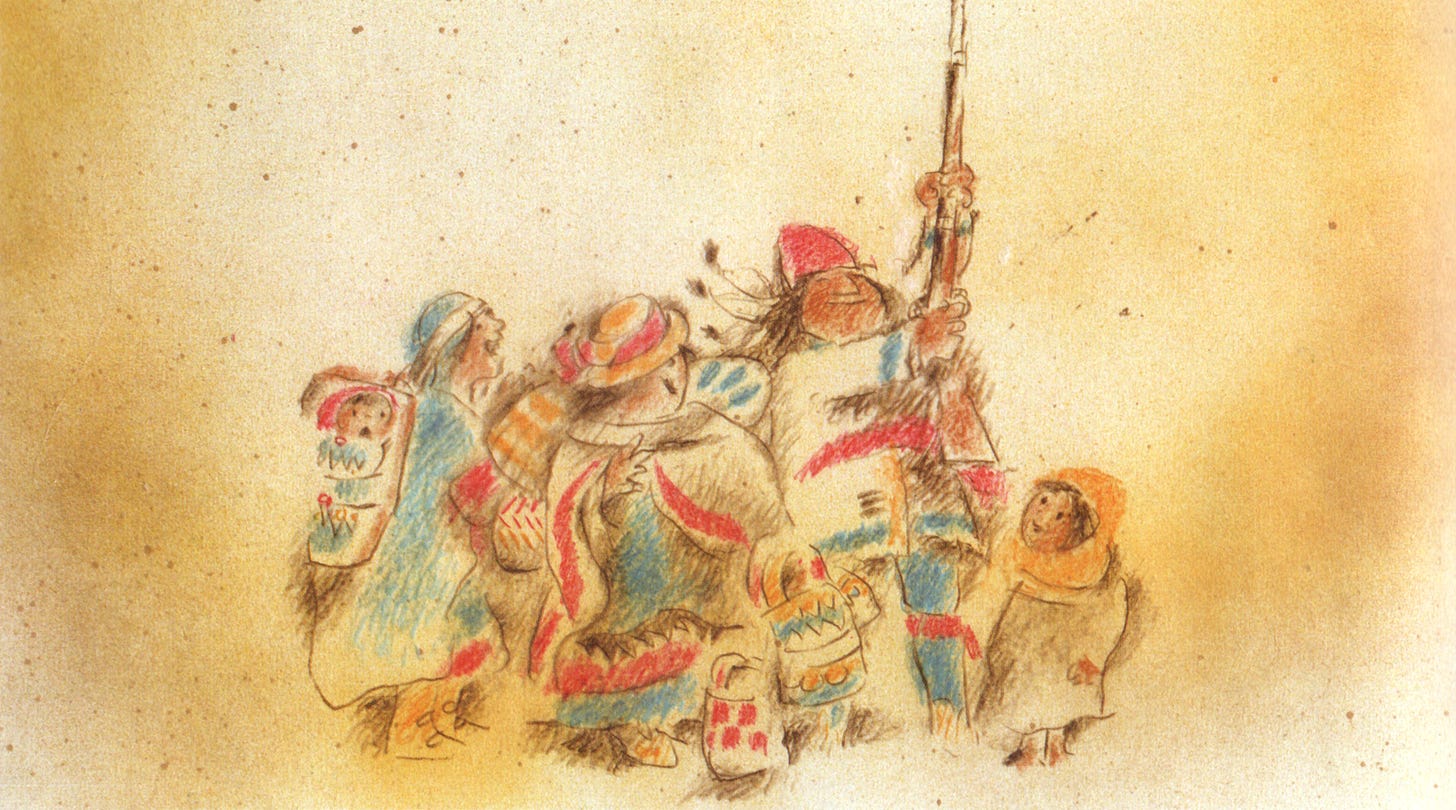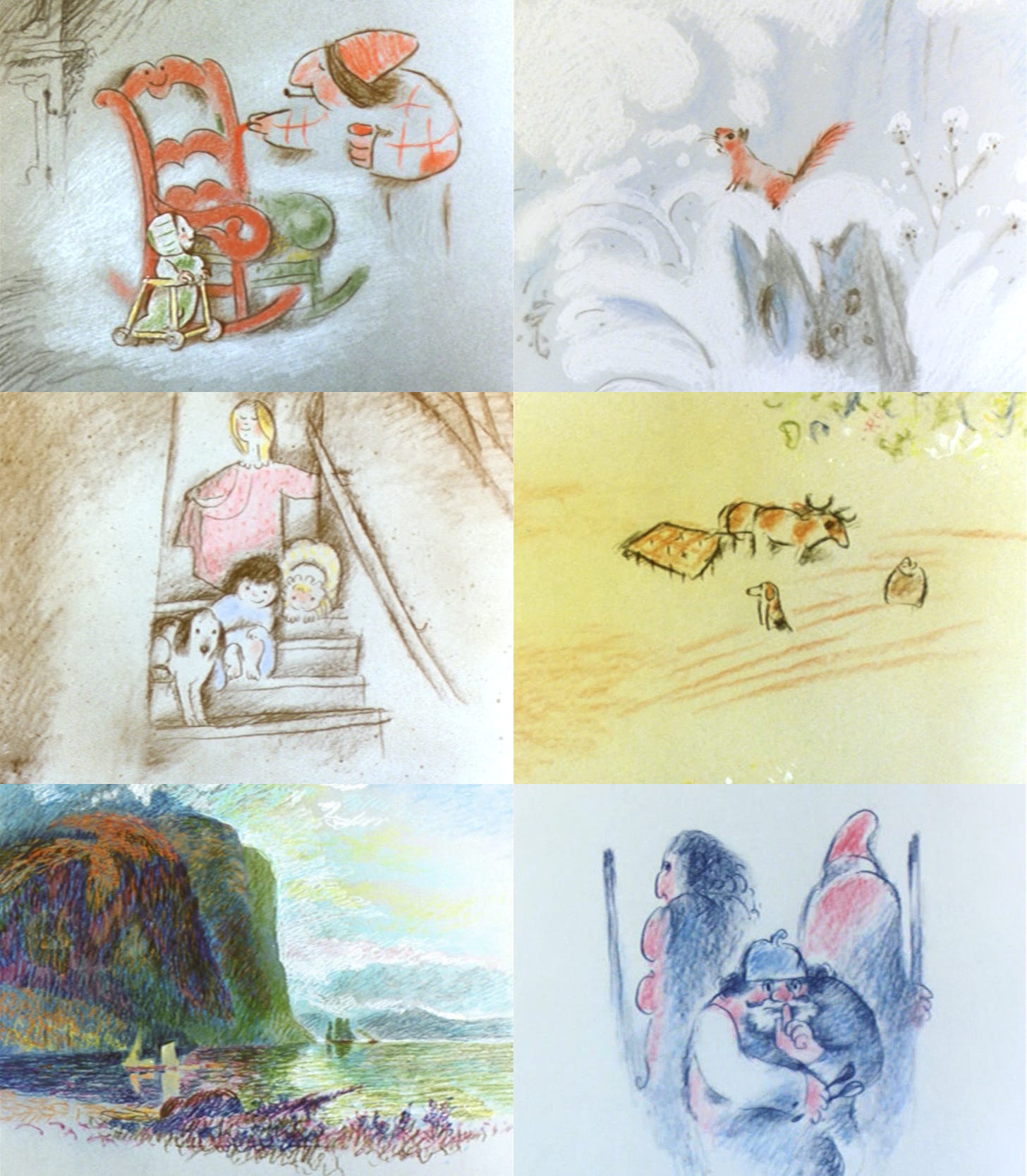In 1982, Isao Takahata and Hayao Miyazaki were in the United States. They’d come to work with Hollywood on an animated Little Nemo feature. The experience was a frustrating one.
But something good came out of it. While in Los Angeles, Takahata went to a screening of The Adolescent (1979), a live-action movie from France. It was touring American theaters as a double bill with an animated short from Canada. Takahata didn’t realize that the short had already won an Oscar earlier in 1982.1
Its title was Crac (1981). Takahata was floored — “completely captivated,” he later said. He had to watch it again, pulling colleagues along.
Miyazaki’s reaction was similar. In his words:
It was a shock to both of us. As we trudged home after the film, I remember saying to Takahata-san, “So, I guess we’re failures, aren’t we…”2
He and Takahata became evangelists for Crac when they got back to Tokyo. Toshio Suzuki, then a magazine editor, heard the raves. “They said that the story, theme and presentation all matched,” he remembered. Even the characters and backgrounds were united in the film’s single, total vision — something Japanese cel animation didn’t do.3
They’d discovered a filmmaker, Takahata later wrote, whose “content and presentation are inseparably linked.”
Crac’s quiet beauty and emotional pull, and its message about the hazards of modernity and the value of rural living in Quebec, strongly resonated with Takahata and Miyazaki. It became one of their favorite films — and biggest influences. From that point, at least a little (often a lot) of this film showed up in their work.
Keep reading with a 7-day free trial
Subscribe to Animation Obsessive to keep reading this post and get 7 days of free access to the full post archives.




